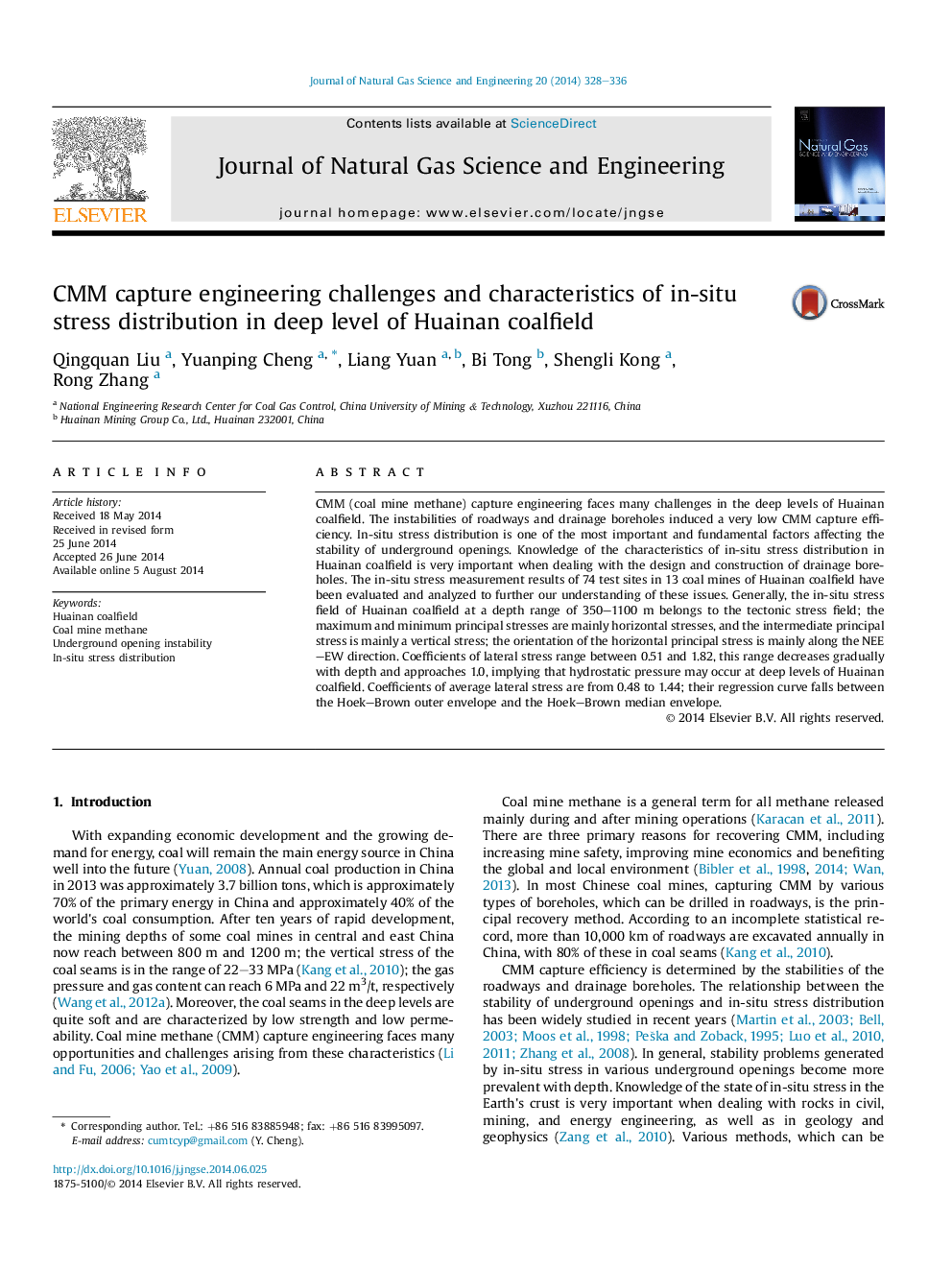| Article ID | Journal | Published Year | Pages | File Type |
|---|---|---|---|---|
| 1757892 | Journal of Natural Gas Science and Engineering | 2014 | 9 Pages |
•Challenges to CMM capture engineering in Huainan coalfield are investigated.•In-situ stress measurement results of 74 test sites in Huainan coalfield are evaluated.•Relationships of in-situ stress variation with depth are presented and analyzed.
CMM (coal mine methane) capture engineering faces many challenges in the deep levels of Huainan coalfield. The instabilities of roadways and drainage boreholes induced a very low CMM capture efficiency. In-situ stress distribution is one of the most important and fundamental factors affecting the stability of underground openings. Knowledge of the characteristics of in-situ stress distribution in Huainan coalfield is very important when dealing with the design and construction of drainage boreholes. The in-situ stress measurement results of 74 test sites in 13 coal mines of Huainan coalfield have been evaluated and analyzed to further our understanding of these issues. Generally, the in-situ stress field of Huainan coalfield at a depth range of 350–1100 m belongs to the tectonic stress field; the maximum and minimum principal stresses are mainly horizontal stresses, and the intermediate principal stress is mainly a vertical stress; the orientation of the horizontal principal stress is mainly along the NEE–EW direction. Coefficients of lateral stress range between 0.51 and 1.82, this range decreases gradually with depth and approaches 1.0, implying that hydrostatic pressure may occur at deep levels of Huainan coalfield. Coefficients of average lateral stress are from 0.48 to 1.44; their regression curve falls between the Hoek–Brown outer envelope and the Hoek–Brown median envelope.
